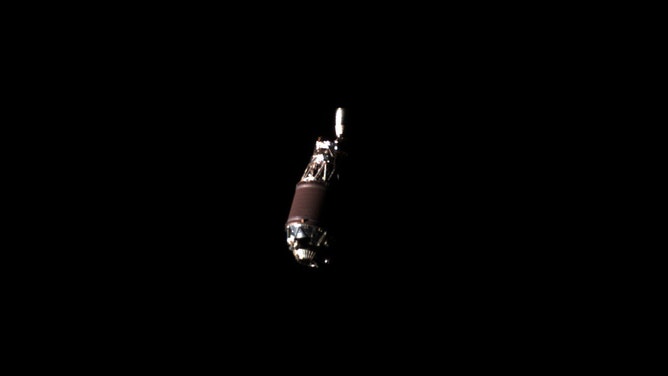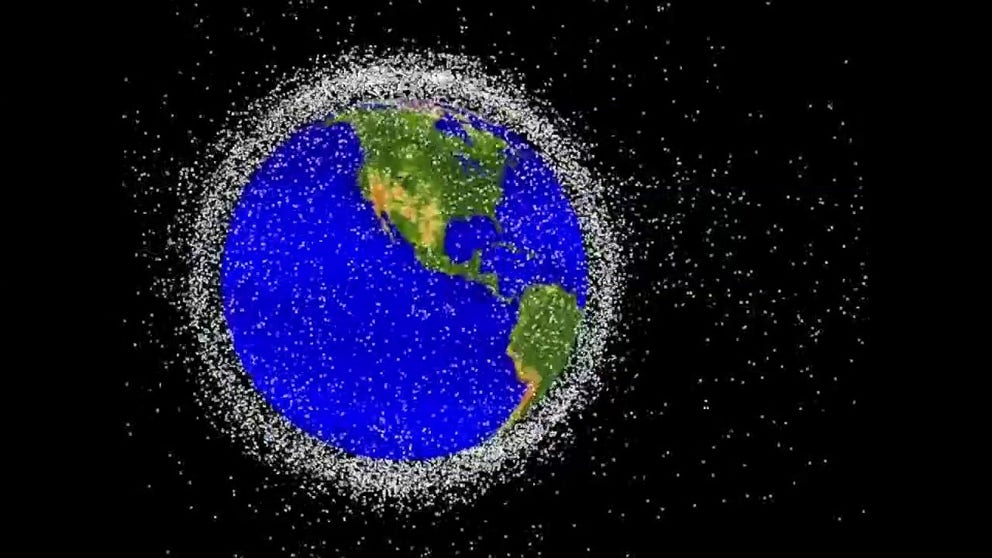Spacecraft captures first portrait of space junk with close-ups to come
Pieces of space trash are moving at speeds around 17,500 mph and can pose risks to new spacecraft and the International Space Station. In April, the ADRAS-J spacecraft photographed the rocket's upper stage from several hundred meters away, marking the first photo from such an operation. A follow-up mission will approach the same rocket body and deorbit the rocket part using a robotic arm.
Watch simulation of space debris orbiting the Earth
The following graphics are computer generated images of objects in low-Earth orbit that are currently being tracked. The orbital debris dots are scaled according to the image size of the graphic to optimize their visibility and are not scaled to Earth. (Courtesy: NASA ODPO)
For the first time, a spacecraft is capturing photos of pieces of space junk in the void of space as the company Astroscale plans to get even closer to addressing the growing problem of space debris in low-Earth orbit.
In February, Astroscale Japan Inc. launched a spacecraft called Active Debris Removal by Astroscale-Japan, or ADRAS-J, as part of the Japanese Aerospace Exploration Agency's space debris removal program.
There are millions of pieces of space junk in low-Earth orbit, mostly from human-generated objects such as defunct spacecraft or rocket hardware. Some of these pieces of space trash are moving around 17,500 mph and can pose risks to new spacecraft and the International Space Station.
NASA'S NEW PLAN TO TACKLE SPACE JUNK INCLUDES DIRECTOR OF SPACE SUSTAINABILITY
The ADRAS-J spacecraft mission will attempt to approach and survey an existing piece of space junk. In this case, Astroscale will use a Japanese rocket's upper stage for this demonstration mission.
Astroscale Japan states, "The mission will demonstrate some of the most challenging rendezvous and proximity operations technologies necessary for on-orbit services."

A photo taken by Astroscale's ADRAS-J spacecraft while severel hundred meters away from a Japanese rocket upper stage in space.
(Astroscale Japan Inc. )
In April, ADRAS-J photographed the rocket's upper stage from several hundred meters away, marking the first photo from such an operation. The image shows the lonely rock body in the darkness of space.
NASA IDENTIFIES MYSTERY OBJECT THAT CRASHED THROUGH FLORIDA MAN'S HOME
"The unprecedented image marks a crucial step towards understanding and addressing the challenges posed by space debris, driving progress toward a safer and more sustainable space environment," Astroscale Japan said.
The company said the milestone demonstrates the ability to make a controlled approach to a piece of space debris.
During the next phase of the mission, ADRAS-J will take more images as it gets closer to the rocket debris. In a follow-up mission, another spacecraft will approach the same rocket body and then deorbit the rocket part using a robotic arm.
